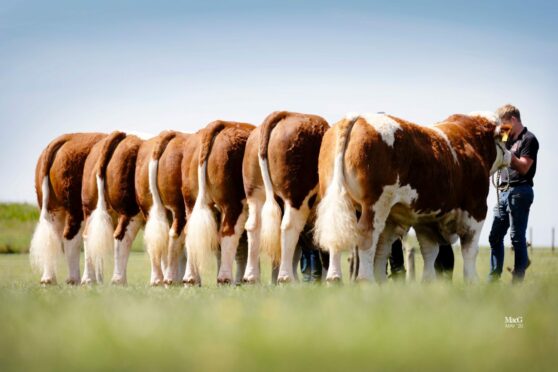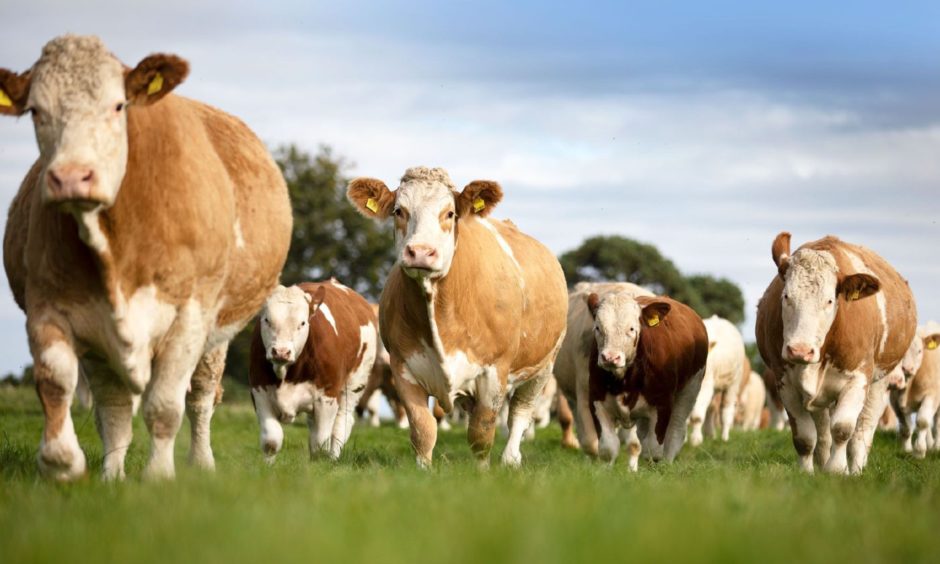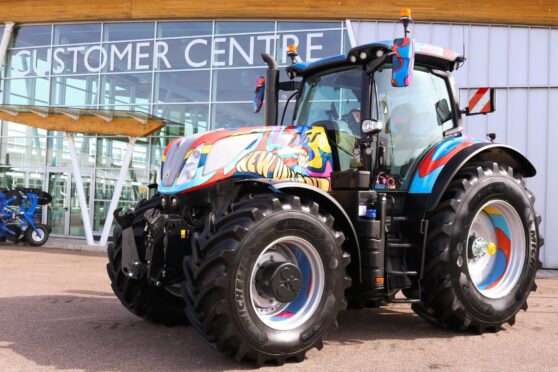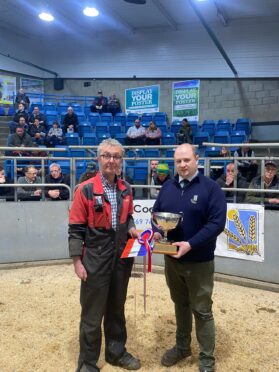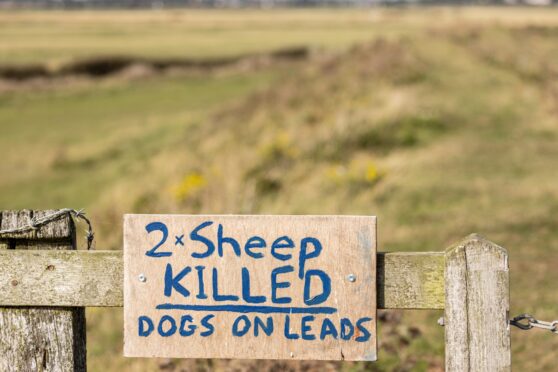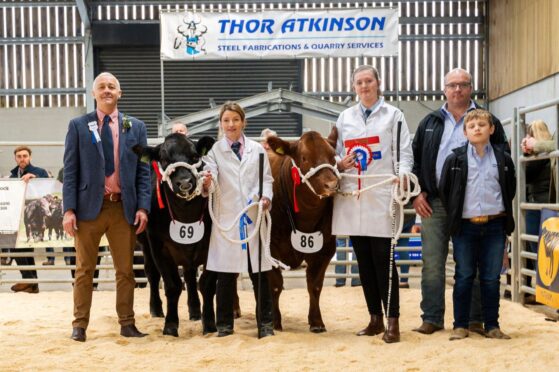Results from a recent survey conducted by the British Simmental Cattle Society have revealed that 36% of buyers changed to the Simmental from a different breed of bull in the previous five years.
The survey saw buyers who had purchased from 2017 to 2019 comment on a range of topics, covering the initial reasons for purchasing a Simmental and how satisfied they have been with the abilities and performance of their bulls to date.
Respondents answered a range of questions including fertility and serving capacity, performance of progeny, heard health information, pre-sale inspections and fertility testing.
The top characteristic for buyers was temperament and this was emphasised later in the survey with a total of 97% saying that the temperament of their bulls was good.
Less than 5% of purchasers said that the bulls or their progeny had been below average for temperament.
More than 70% of buyers indicated that performance figures and EBVS were ‘quite’ or ‘very’ important when purchasing a bull, with EBVs being ranked the most important and maternal (milk) a close second.
The Simmental breed has taken a lead in many aspects of herd health at sales over the years and the importance of this is shown in the survey with a total of 98% of respondents saying that it was very important or important to purchase from high health herds.
Over 90% of buyers placed importance on bulls having passed through a pre-sale inspection with 57% saying it was ‘very’ important.
From the respondents, 60% of the bulls have gone to work on hill farms and 4o% to lowland.
Bulls are used on mainly suckler herds, with the dominant breed of suckler cows being Simmental/Simmental crosses, followed by Limousin/Limousin crosses, Aberdeen-Angus/Aberdeen-Angus crosses and Luing/Luing crosses.
The largest percentage of buyers said they run 31 to 100 cows, with 37% having 101 to 200, and just over 21% having more than 200 head.
Just over 92% of buyers said that they retained heifer calves as herd replacements, 42% of buyers revealing that they used bulls on heifers, and of those, 44.% aim to calve the heifers at 28 months and under.
Breeders were given some signals for forward sales to not overfeed bulls, and the importance of feet, good legs and mobility.
Iain Kerr, British Simmental Cattle Society general manager said: “The Simmental breed is renowned for breeding quality heifer replacements and for being first class suckler cows with plenty of milk, good fertility, easily calved and crossing to advantage with any other breed.
“We also see Simmental progeny being easy fleshing, with good growth rates, top weights for age, and being the industry leader for age at slaughter. To have these qualities recognised and endorsed by the breed’s buyers, with an approval/repeat customer rate of 94%, is really encouraging.”
